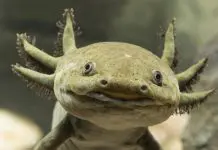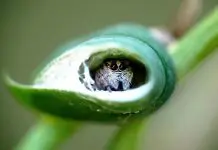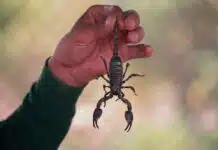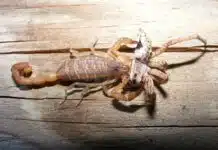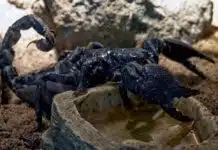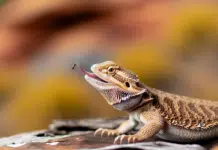No, axolotls definitely cannot live out of the water! As an amphibian, they possesses both lungs and gills for breathing. But it has almost never been seen out of water for a prolonged period of time, it is simply not natural for them to be living out of the water.
Axolotls have lived all their life submerged under water and it has never been seen or recorded to be out on land. Originating from the southern part of Mexico, Lake Xochimilco, these cute little creatures certainly is not capable of living out of water due to its anatomy and characteristics.
Being classified as an amphibian means that it should theoretically be able to live out of the water, but for an axolotl, I can safely say that it leans towards the aquatic aspect as most of its traits that are being exhibited are almost fish-like.
It is not possible for an axolotl to walk on land. I have come across axolotl keepers asking similar questions in forums where they would come home to discover their axolotls out of their tank and still surviving after putting it back. This is something I would urge all axolotl keepers not to do as it may risk the lives of their axolotls, most of the time fatal if they are being exposed out of water for an extended period of time.
I will be covering more on why an axolotl is not able to live out of water due to certain factors such as its build, and provide some facts and rationale behind it. Be sure to scroll further if you wish to find out more!
Axolotl facts and anatomy
Why can’t they live on land?
Treat axolotls like a baby that can never grow up, physically. Through my years of raising axolotls, conversing with many fellow axolotl keepers, and scouring the internet to find out more, I have never seen an axolotl, still, in its neoteny state survive out of water for even half a day.
You may even google “why are axolotls not able to survive out of water”, you will get common replies and answers that will usually lead you back to neoteny.
Axolotls are neotenic salamanders which will never really metamorphosed into mature salamanders. Whereas for the other amphibian salamanders, they will gain certain traits like bigger and stronger limbs developed to support its body on land, gills will eventually drop off where they will make use of their lungs more, and their skin will toughen up from its delicate skin.
How long can they stay out of water?
Axolotls cannot stay out of water for a long period of time. It is not advisable for an axolotl to stay out of water under any circumstances at all. I will not advise any duration or provide any time frame.
But it is ultimately inevitable when you are doing your regular water changes for them. In such cases, the should have a makeshift container already filled with water partially where you will house them for a short time while you perform your water changes in their main tank.
Transfer them as fast as possible, say a quick few seconds is still acceptable for them. Any duration further might stress them out and we do not want that to happen.
How does the axolotl gills work?
Isn’t it just mesmerizing to watch an axolotl occasionally flapping its sprawling feathery gills every now and then? What is the science behind it? Allow me to take you through behind the scenes of how these attractive feather-like external gills work.
The axolotl’s gills mainly consists of 3 large branches both on the left and right side at the back of its head where you can see above. Each gill bars have several large vessels running through with an overlaying pinkish tube which is also known as the venous plexus.
Blood that is being absorbed and diffused runs through these branches which is then being spread out to the other vessels. Oxygen is being exchanged through the fine filaments within those minuscule capillaries which will then pump the exchanged gas (carbon dioxide) out through the venous plexus and the arteries to returning it back to the water.
The axolotls do not swim around like fishes to facilitate this breathing process. Instead, they are able to do so by staying still at the bed of the tank or its environment and this breathing process will take place by it flapping its external gills.

The primary use of these special unique gills is one of the ways an axolotl breathes. These gills acts as another avenue for the axolotl to breathe better as larger volumes of gases can be exchanged through these branches of arteries where the gas is being diffused into the bloodstream directly from the water. By occasionally flapping its external gills, it helps to move the water around its fine filaments to promote the exchange of gases.
They should look relaxed and the flapping motion should not be done at very quick intervals, else this may be a sign that your axolotl is either in discomfort or its gills are infected.
Consequences of staying out of water

The consequences of an axolotl staying out of water may be dire as the slime coat that it excretes may dry out and after using up whatever remaining air in their lungs they have to breathe, some might die while others who are strong enough would last somewhat longer.
The slime coat that its formed all around the axolotl works exactly like fishes. Since an axolotl does not have hard scales like crocodiles or a tough spiky exterior to fend off predators, their slime coat is the only layer of protection to their highly susceptible skin.
This mucus-like substance which some of you may have touched before while handling the axolotl is there to protect axolotls from any kinds of infections, virus, and bacterias that are around them, it also helps maintain and preserve the necessary fluids and electrolytes (fishes electrolyte works the same way as the electrolytes found in humans, they are present to keep our organs and cells functional) any aquatic life require.
But I would like to take this opportunity to URGE and I cannot emphasize enough the importance that an axolotl, at ALL times should not be left out of water at all.
In their most natural habitat, they have been surviving underwater throughout their entire life! I will run through and share a couple of pictures and videos which I have scoured the internet for, and hopefully, these images might change your mindset as to why they are not supposed to be out of water at all!
WARNING: what you are about to see may cause discomfort to some. Please do not proceed further if you are having a meal at the moment, as the following contains images/videos that readers may find disturbing. These images/videos are being used with the intention of educating and nothing more.
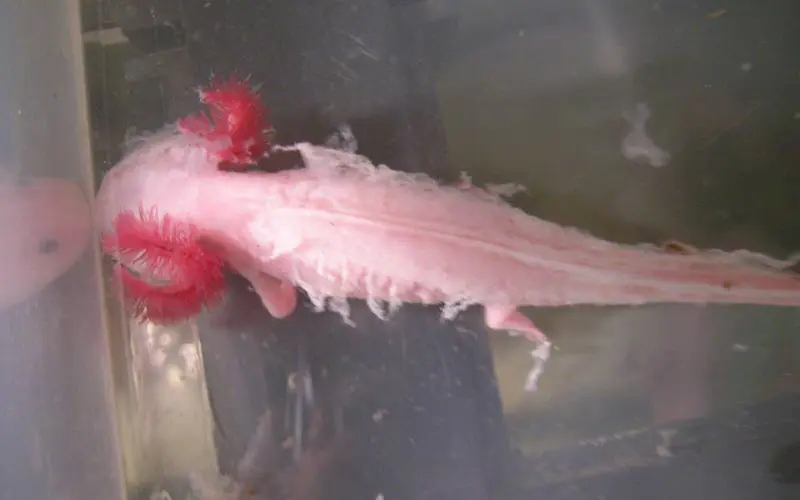
The above images are taken after it has been out of the water for close to 10 hours! This is really unacceptable and NO ONE, I repeat, no one should allow this to happen to their axolotls. Look how poor thing this little guy looks! :(
This was when the axolotl was just being placed into a fresh tub of water a day later. As axolotls breathe through its skin and gills, their skin is really very sensitive as their skin is used for oxygenating blood, hence you can see its slime coat forming again but it may also come with secondary external infection due to the fact it may be exposed to your carpeted floor or any flooring that might accumulate dust or dirt easily.
Damaged slime coats, curled gills, curled limbs and curled tail are symptoms and signs that an axolotl is severely stressed. Most of the time, they are not able to survive through from a short few hours to a couple of days, but there are some strong ones which have been said to pull through such ordeals. Lucky Owners!
Here is the video where I’ve gotten the screen grabs from
Here are some more images of axolotls that are being handled out of the water. While I understand that some of you might be doing water changes and manhandling it out of the water just for that quick few seconds is fine.
Do make sure that your hands are clean before handling them as their skin are very sensitive and their slime coat might not always protect them from external virus and diseases.
Even when you wash your hands with soap, do make sure that there is no more soap lingering around your hands which are not washed off, be sure to rinse your hands again after washing it with soap before handling them.
Moral of the story and lesson learned
These images and pictures are used for educational purposes and I hope that ALL fellow axolotl keepers will take the necessary measures to make sure that your axolotls will not have the chance to squirm or shoot out of the tank. Whenever they get spooked out or find themselves in danger, it is their natural instinct to dart out or shoot up to “escape” from any harm they sense.
If you do not have a tank cover, I would strongly recommend egg crates or fish tank dividers as there are holes to still allow proper ventilation and for the axolotls to take air. Buy the correct size or even get bigger ones and you may use something to act as a weight on these covers to compress the impact of the jump so the lid will not fall off.
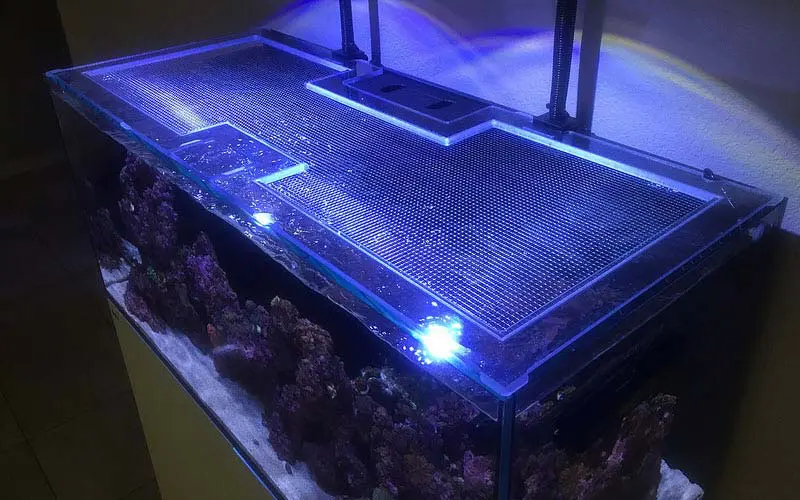
Let’s all learn from mistakes and move on, learn how to care for these adorable creatures before it’s too late. Do check out our comprehensive axolotl care guide and educate yourself so that you are able to rectify any situations at any given time. Let’s not take any chances when it comes to our pet axolotls, shall we?

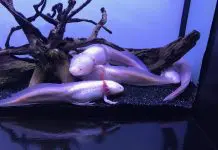

![Sick Axolotl, Fungus, Stress Symptoms [Axolotl Illness Guide 2025] Axolotl fungus](https://exopetguides.com/wp-content/uploads/2018/06/axolotl-218x150.jpg.webp)
